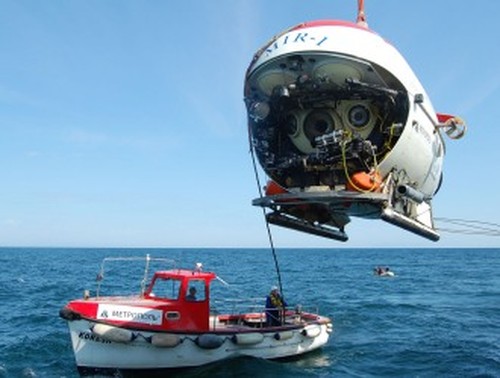On the lakes with the "Mir Subs"
In the Limnological Institute during Science Day, some students for
the first time learned what the word "Limnos" means. It means lake,
and therefore the Limnological Institute is engaged in the science
of lakes. In the laboratories, of which the institute has 12, are
carried out unique studies in the biology of aquatic invertebrates
and ichthyology. Most college students know about Lake Baikal,
thanks to a school course entitled "Baykalovedenie”, the greatest
interest of tourists has been caused by the "latest news", or
stories related to deep-sea research involving the domestic
deepwater vehicles - the “Mir-1” and “Mir-2" Subs.
In the last season, researchers conducted a dive into the Gulf of
Maloye Ozero (Small Sea), located between the west coast of the
lake and the island of Olkhon, as well as into central and southern
Baikal. They studied the fauna of the lake, the movement of the
shoreline, mud volcanoes, tectonic activity at the bottom of the
lake, continued to search for archaeological artifacts. On the last
expedition of the "Mir Subs" at the bottom of Lake Baikal, students
decided to learn even more. In the "Mir Subs" many different
attachments were installed – intake structures, echo sonar, and
echo-ranging sonar. Special devices allowed for the performance
jewelry-like precision work, including the lifting of fragile
things. Such devices, for example, raised items from the
"Titanic."
Under the layer of water (the deepest point of Lake Baikal - 1642
meters) the unit is subject to very strong pressure, and thus
descent and ascent processes of the "Mir Subs" are very
complicated. Nevertheless, the actions of the team, which students
saw in the video frames, are striking in their coherence. Take into
account the wind and waves, and inertia - after all, the unit
weighs about 20 tons. It should be noted that on board the “Mir
Subs” there is always warm clothing. The fact is that only when you
sit down in the apparatus is the temperature a quite comfortable 25
degrees, but underwater the housing cools and condensation
develops. Things get quite cool - the temperature drops to 15
degrees.
The main task of diving is the collection of information about the
lake. Among the objects of the research were gas hydrates, because
they are seen as an alternative fuel source. Also researched were
the places of natural seepages of oil. These are unique because
they are like an oasis - the oil not only pollutes the water, but
even vice versa. Living organisms are concentrated in the area of
emissions and eat the carbohydrates. As a result, the underwater
life here is much richer than in other places.
Of course, after such a story about the expedition, students began
to dream about the next trip to Science Day in the deep-sea
research laboratory. So that the dreams did not seem just a pure
abstraction, each member was issued a certificate, naming them
official participants of the Limnological Institute’s science
holiday.
Science Day was not just a banal excuse for first-year students to
be absent from their basic classes in college. According to the
tour participants, no one regretted his or her time spent in
academic institutions. Being deeply impressed, the students
congratulated the scientists on their professional holiday,
sincerely wished them prosperity and many new tourism visits, from
people seeking enlightenment, and they decided that from now on,
every year, they will congratulate the workers of science.

Source: Eastern Siberian Pravda



